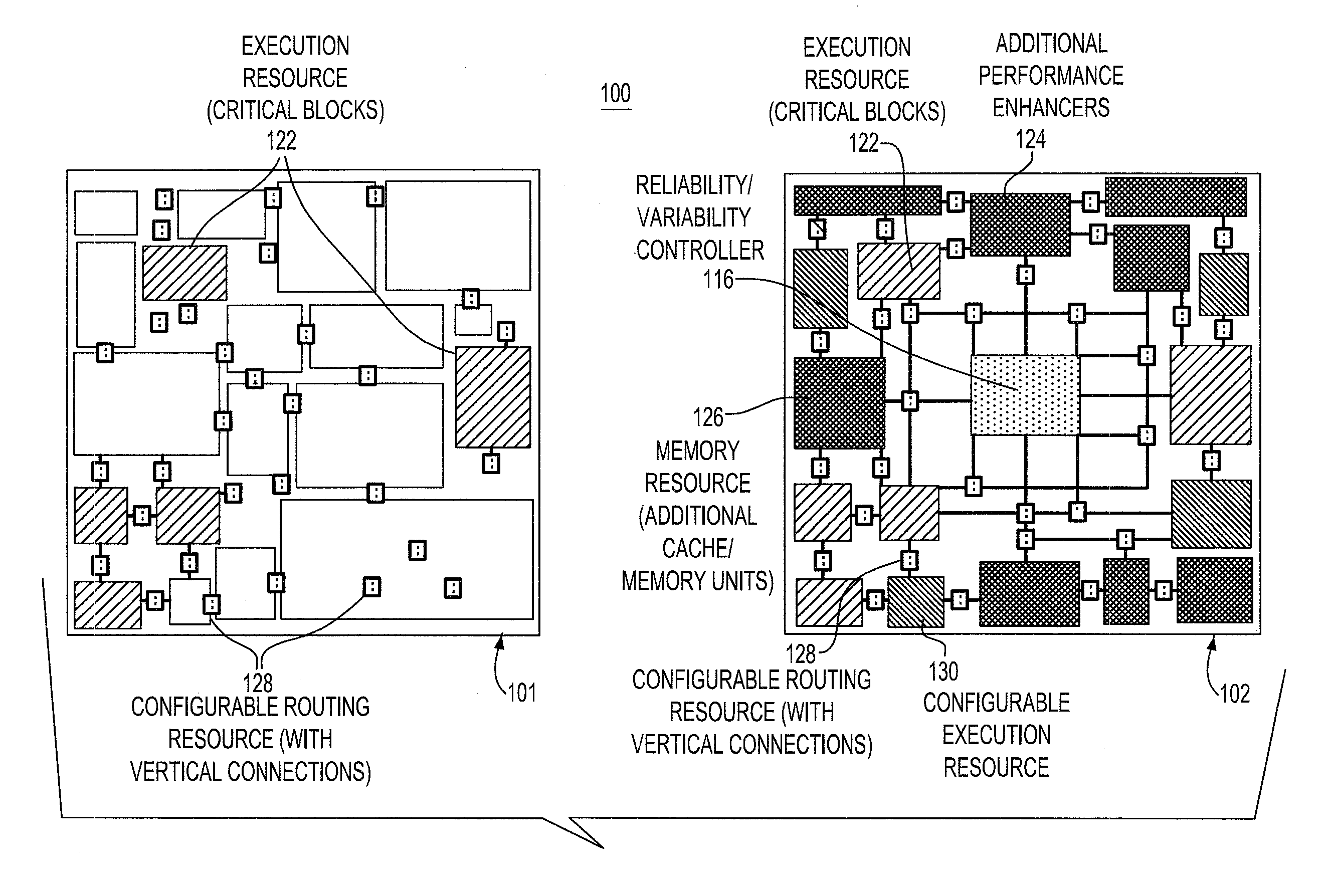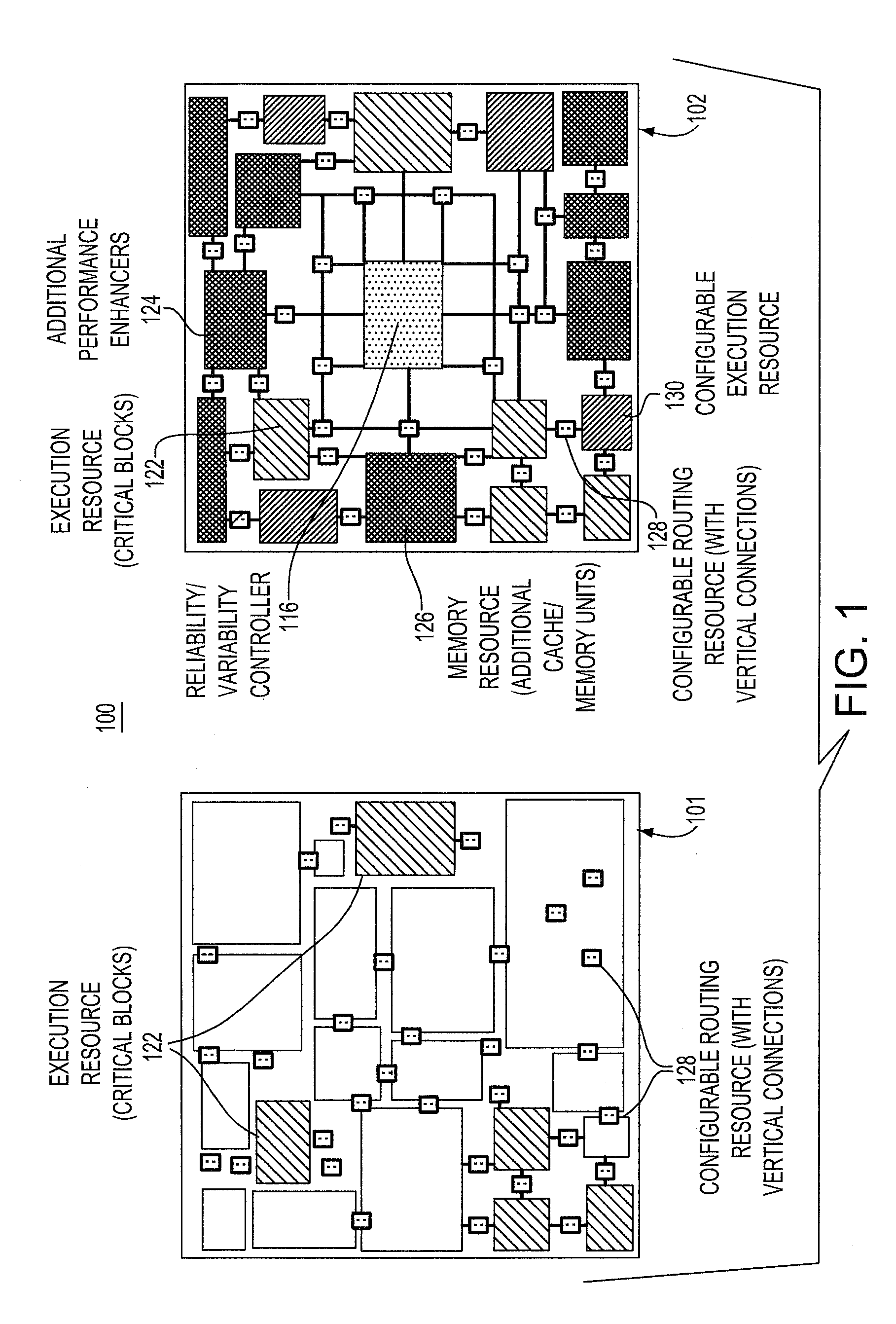Method and arrangement for enhancing process variability and lifetime reliability through 3D integration
- Summary
- Abstract
- Description
- Claims
- Application Information
AI Technical Summary
Benefits of technology
Problems solved by technology
Method used
Image
Examples
embodiment 200
[0018]Referring now in detail to FIG. 2 of the drawings, the concept is represented on a 2-layer 3D embodiment 200, having first and second layers 101, 102. The second device layer 102 includes an on-chip variability / reliability controller 116, as well as redundant resources 218 that can be activated if a primary unit 220 in the first device layer 101 is faulty. The on-chip controller 116 activates any idle blocks while inactivating (turning off and by-passing) faulty units. Moreover, it includes performance-enhancing resources 122, 124, 126, 128, 130, additional cache / memory hierarchy such as DRAM or SRAM as well as monitoring and recovering capabilities.
[0019]The connection between the primary copy of a block and the redundancy which is placed on the top layer 102 may be achieved through vertical interconnects 128, such as TSVs (through-the-silicon-vias). The configurable interconnect 128 can be adjusted to connect either copy of the fault domains to the rest of the chip in case o...
embodiment 300
[0021]Referring now in detail to FIG. 3 of the drawings, the inventive concept is further represented on a 3-layer 3D embodiment 300, having first 101, second 102 and third 101 layers. In this embodiment, one auxiliary (or secondary) chip 102 is stacked in between two primary chips 101. The second device layer 102 includes an on-chip variability / reliability controller 116, as well as a configurable and custom redundant resource 330 that can be activated and dynamically assigned to either of the primary chips 101 if a primary unit 320 in either of the primary device layers 101 becomes faulty during system runtime. Also, if the primary units 320 in both primary chips 101 become faulty, the configurable redundant resource 330 on the secondary chip 102 can be used to replace both, albeit at a reduced system performance.
PUM
 Login to View More
Login to View More Abstract
Description
Claims
Application Information
 Login to View More
Login to View More - R&D
- Intellectual Property
- Life Sciences
- Materials
- Tech Scout
- Unparalleled Data Quality
- Higher Quality Content
- 60% Fewer Hallucinations
Browse by: Latest US Patents, China's latest patents, Technical Efficacy Thesaurus, Application Domain, Technology Topic, Popular Technical Reports.
© 2025 PatSnap. All rights reserved.Legal|Privacy policy|Modern Slavery Act Transparency Statement|Sitemap|About US| Contact US: help@patsnap.com



